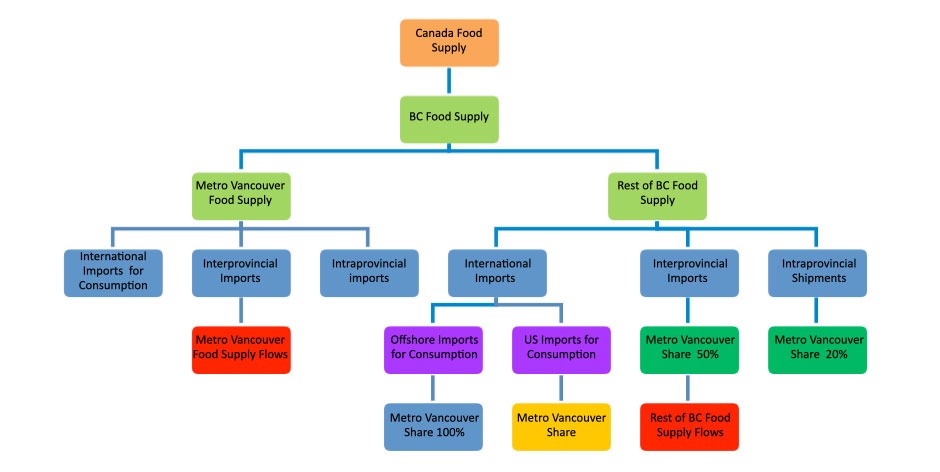DTCI was engaged by Metro Vancouver to conduct a “Food Flow” study to describe how food products move within the region and across regional borders. Consulting team members included Philip Davies, Abra Brynne and Darryl Anderson. The scope of the study included estimation of the volume and value of food imported to and exported from Metro Vancouver; the methods used to transport this food; and the entry/exit locations.
For purposes of this study, perishable food is defined as food products that have specific storage requirements such as meat, poultry, fish, dairy products, unprocessed raw fruits and vegetables that require cold storage, as well as bulk grains and pulses. Imports and exports refer to the shipping of commodities to and from the interprovincial, American and global markets.
International trade flows were estimated directly based on U.S. and Canadian Customs data and data obtained from the Port of Vancouver and Vancouver International Airport. Total consumption of food commodities within Metro Vancouver and the rest of BC was estimated based on Food Supply estimates developed by Statistics Canada through their food statistics program. The diagram below depicts the methodology used to estimate Metro Vancouver food flows related to consumption for the region and for the rest of B.C.

Highlights of the findings include:
- Metro Vancouver is the food distribution hub for BC. 78% of the provincial food supply flows to, from, through or within the region.
- Of the total food flows, 83% are offshore exports of grains, oil seeds, and legumes.
- 34% of the BC food supply is sourced from within the Province.
- 14% of the food produced in Metro Vancouver is consumed within the region.
- Metro Vancouver and BC are self-sufficient in the supply managed commodities (dairy, poultry and eggs), but are very dependent on the US and other countries for fruits and vegetables.
The full report is available on the Metro Vancouver website.

